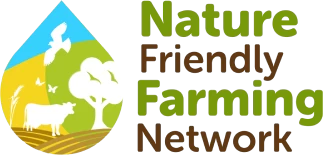The idea was not to decimate the habitats of a whole area, even to a field scale. However, this is not easy. It is more risky, more difficult and more time-consuming. Nevertheless, Callum and his team managed to cut and cart 600 bales of silage and 400 bales of hay between the end of May and the end of August 2022.
Silage is a funny one. People think it is bad, but Callum is not so sure. His experience is that an early cut of herbal ley silage, which is then left for the rest of the season, can provide good quality forage and leave plenty of time for birds like skylarks and corn buntings to raise a brood in the regrowth. On the other hand, he admits that a cut of hay in July may interrupt that brood and not leave time for another. Everything is in moderation, and in patchwork!
One undeniably bad thing about silage is the plastic wrap. Each bale has 2kg of wrap, which means the estate produces 1.2m of plastic waste from their feed alone. As a result, the team explored ways to reduce this. Firstly, this year they worked with their waste company and now recycle the wrap. Having introduced a recycling skip onto the farm they halved their general waste. This amazing percentage should only increase over the winter as they use more silage when the livestock are housed.
In addition, in 2019 the team also tried herbal ley hay. Callum was hoping this would create a happy medium between the feed quality of their herbal ley silage and the plastic-free nature of our parkland hay. However, there is a risk that the hay-making process knocks all the dry, brittle leaves from the clovers, chicory and lucerne which would leave an unpalatable bale of stems.
They managed to avoid this by cutting when they had a decent and hot forecast ahead, and tedding the ley out before the dew lifted within a few hours of cutting. The results show that this trial was a great success, with herbal ley hay having 20% more protein than parkland hay at no extra cost.
The results
Herbal ley silage
Herbal ley hay
Parkland hay



